Whether you’re trying to avoid exceeding your data cap, optimize your network’s performance, or simply curious about your online habits, having the right tools at your disposal is crucial. That’s why we’ve compiled a list of eight Windows programs to track your internet usage. These user-friendly tools offer a wide range of features, from basic monitoring to advanced data analysis, making it easier than ever to stay on top of your digital footprint.
So, whether you’re a casual user or a tech-savvy professional, read on to discover the perfect tool for your needs. And remember, optimizing your internet usage not only helps you avoid unnecessary expenses but also enhances your online experience.
5 Apps to Monitor Mobile Data Usage
It's always a good idea to keep track of your mobile data usage so you can avoid exceeding... Read more
1. NetBalancer
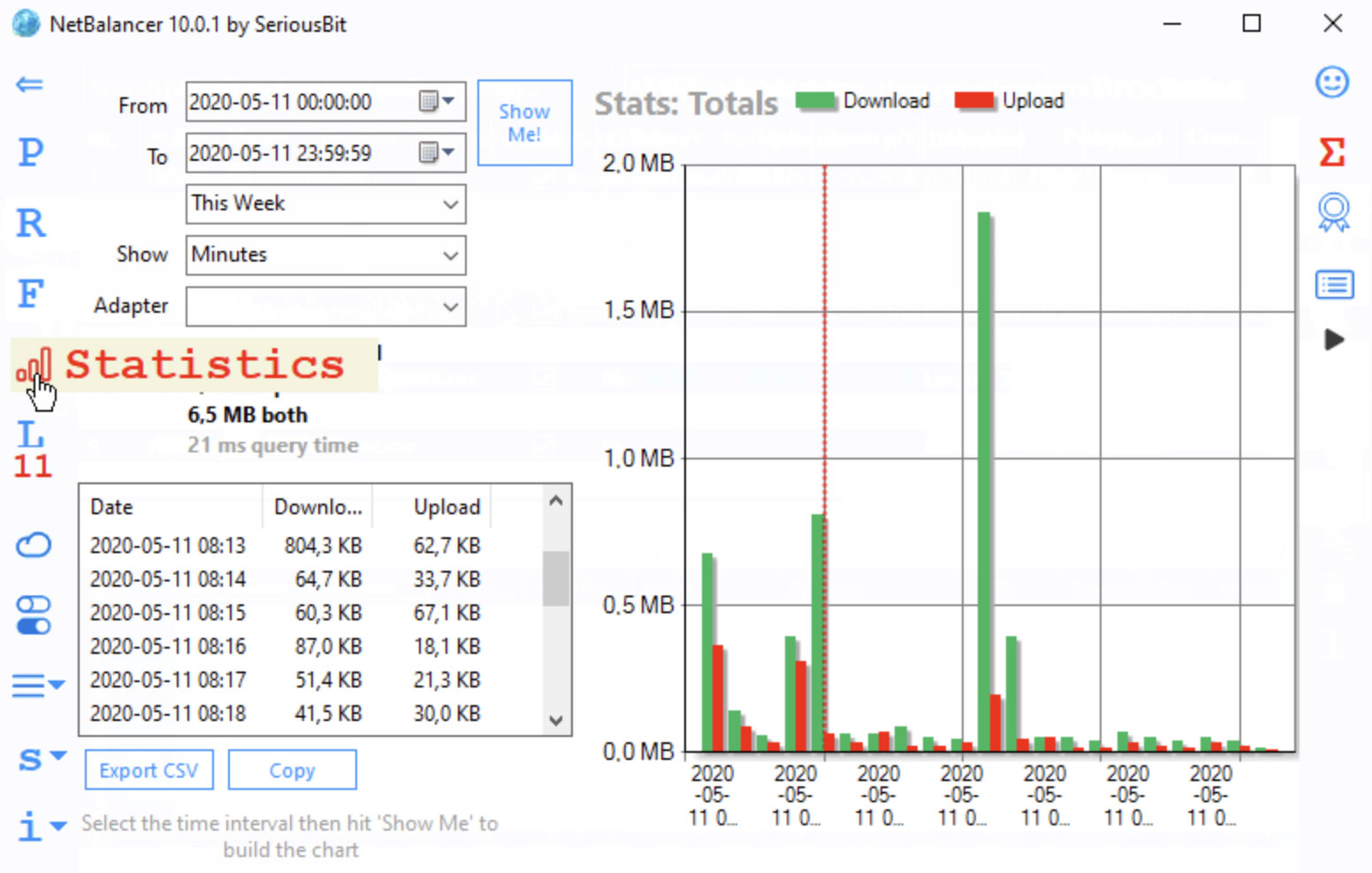
NetBalancer is a powerful tool designed for network traffic control and monitoring. It allows you to oversee your entire system, including multiple network adapters, processes, and system services. This means you can simultaneously monitor both LAN and Wi-Fi connections, supporting both IPv4 and IPv6 protocols.
One of the standout features of NetBalancer is its ability to set priorities and speed limits for processes. Unfortunately, this is a premium feature. However, even with the unregistered version, you can establish system-wide traffic control limits. Additionally, you can monitor network speed, current connections, and perform detailed traffic analysis for all applications and services.
Designed with simplicity and automation in mind, NetBalancer can load traffic rules, priorities, and limits from a network file. Another impressive feature is its ability to group local network computers and synchronize their network traffic configurations. Furthermore, NetBalancer provides a speed graph in the tray icon and its mini-window for easy monitoring.
2. Paessler PRTG Network Monitor
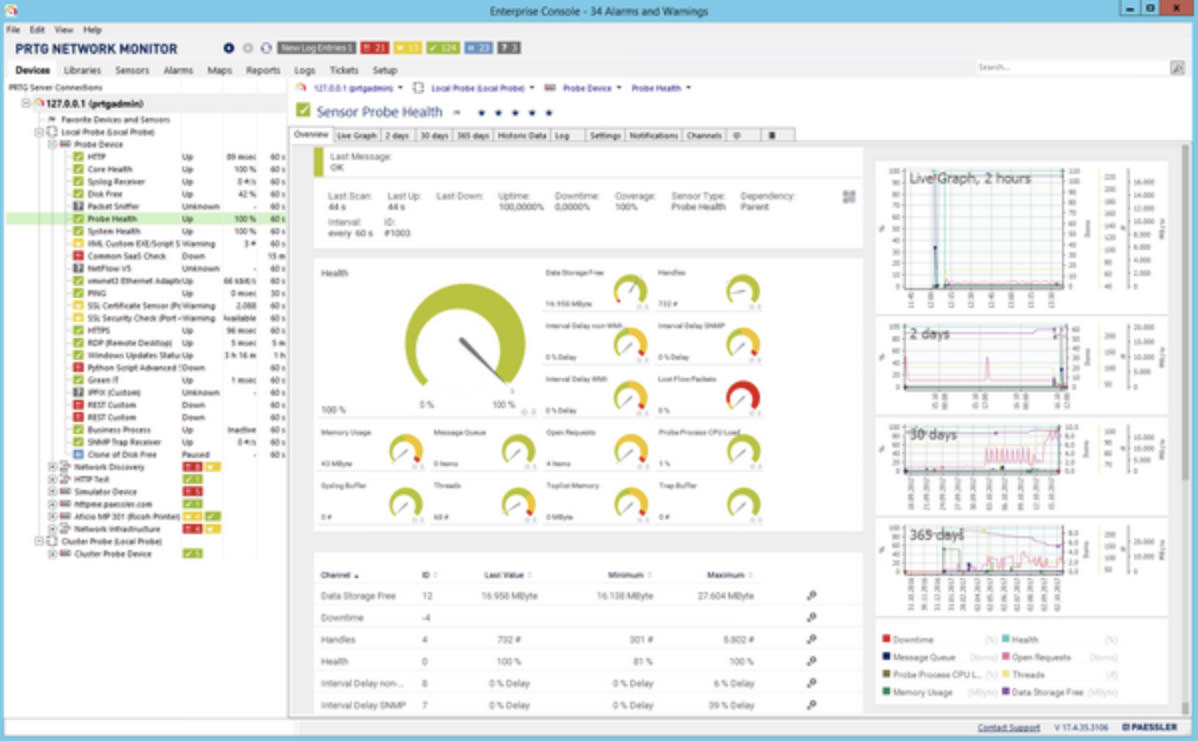
The Paessler PRTG Network Monitor is a robust network monitoring tool best suited for advanced monitoring needs. It offers comprehensive monitoring for your entire infrastructure, including network traffic, applications, bandwidth, cloud services, databases, storage, and more.
3. GlassWire

GlassWire is a network monitor and security tool with a built-in firewall. It visualizes your current and past network activity by traffic type, application, and geographic location, alerting you to any unusual changes in your network activity.
4. BitMeter OS

BitMeter OS is a free, open-source bandwidth monitor that works on Windows, Linux, and Mac. It allows you to monitor your internet connection by displaying a scrolling graph that shows your upload and download speed over time.
5. NetWorx

After installing NetWorx, it will track all your Internet usage with an icon on the taskbar. You can click and launch the program to view usage graphs for each day. A notable feature of NetWorx is the ability to set a daily, weekly, or monthly quota to track uploads or downloads or both. You can also set on/off peak usage that some internet providers offer, and it will warn you if you’re about to reach the limit.
6. NetTraffic
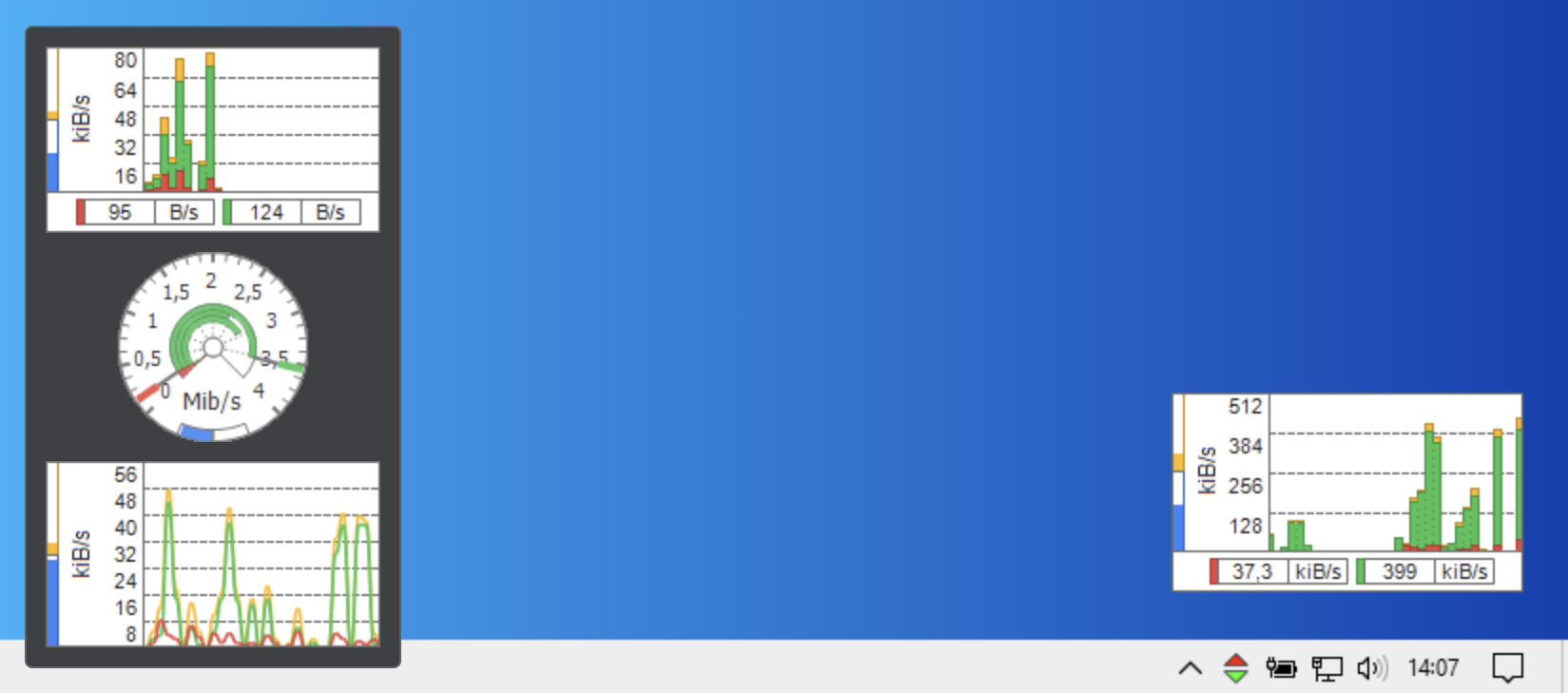
NetTraffic is a straightforward yet powerful tool designed to monitor bandwidth data across various network adapters or connections, including LAN and Wi-Fi. However, it’s important to note that it only tracks system-wide bandwidth usage, not individual users, apps, or services.
The tool provides a statistics window that graphically displays bandwidth usage. It offers data usage information for daily, monthly, or yearly periods. Interestingly, within the same window, a general tab provides a summary of usage and even projects the potential bandwidth quota you might use daily, monthly, or annually.
One of the standout features of NetTraffic is its high level of customization. You can modify its real-time floating window to display the details you find most relevant, similar to the Bandwidth Monitor. Options include changing colors, scale, chart type, and more. Furthermore, its notification area icon provides a clear indication of network activity and displays the current download and upload rates when you hover over it.
7. BitMeter 2
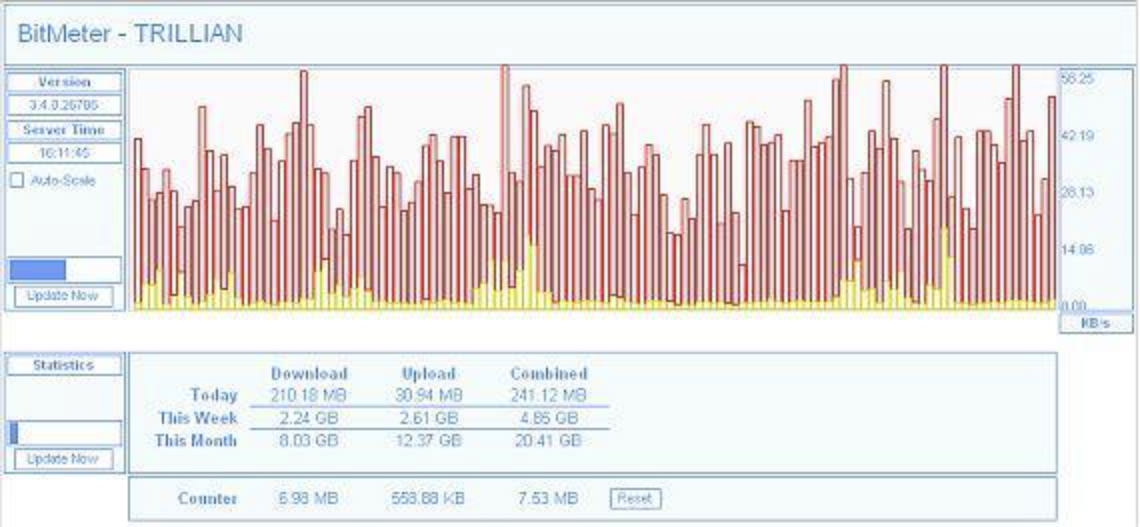
This program features a desktop widget meter graph of your download and upload speeds. Similar to NetWorx, you can add a quota limit — in the case of BitMeter 2, it is named ISP Restrictions. Once set, it’ll inform you about the remaining days and bandwidth before reaching your limit. You can also view your usage stats that can be sorted by hours, days, and months.
8. Net Guard
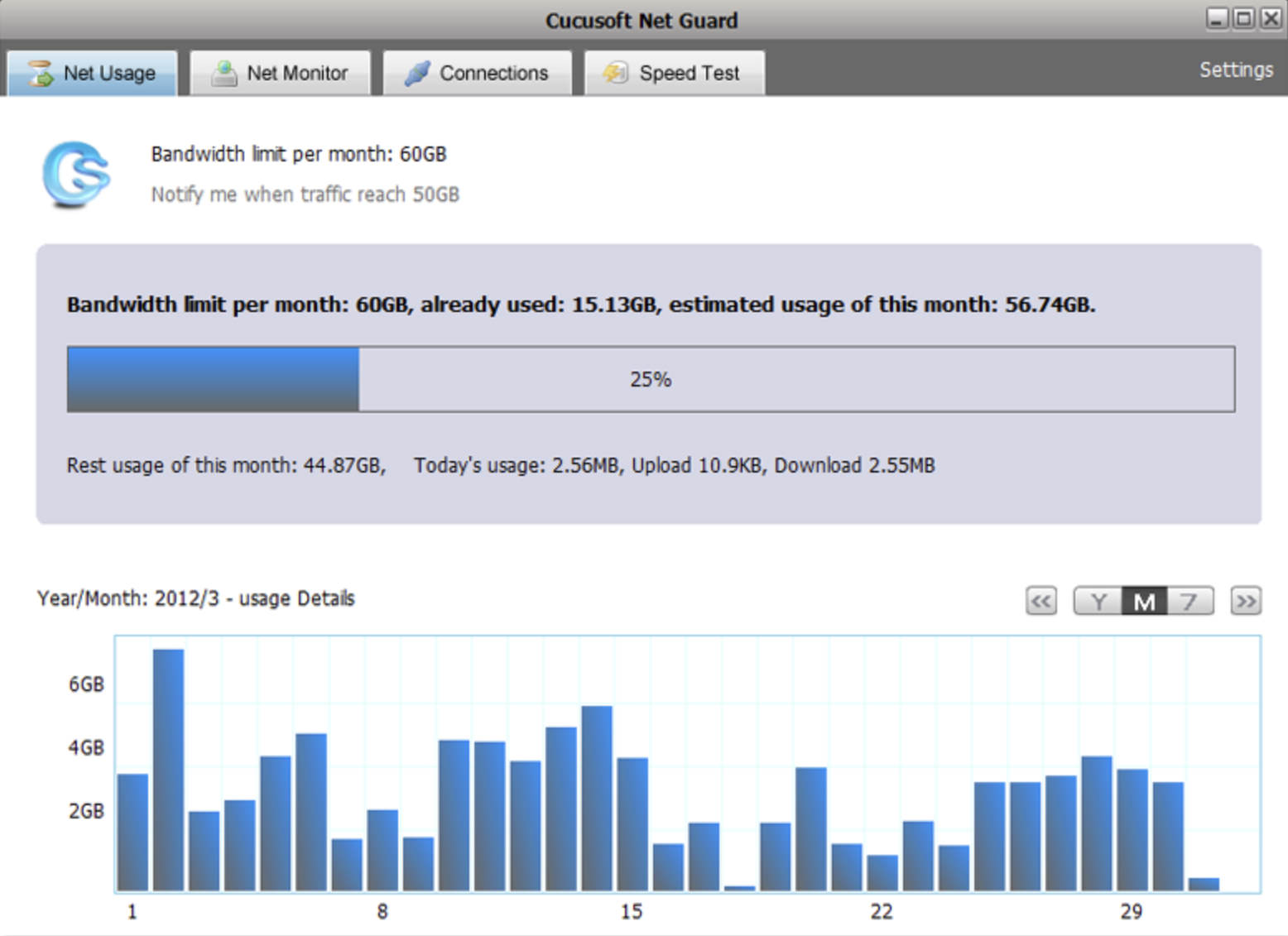
Cucusoft’s Net Guard is a free tool that shares many of the excellent features found in NetBalancer. It offers robust bandwidth monitoring and tracking capabilities, allowing you to keep an eye on your system’s network bandwidth. You can also set a global network limit and identify any programs that are consuming excessive bandwidth.
One of its standout features is the interactive bandwidth usage report, which employs graphs to illustrate the bandwidth usage of each program and service. Additionally, it includes a bandwidth usage prediction tool that estimates your monthly bandwidth needs. It also features a speed test function to measure your network speed.
Net Guard also offers an over-limit notification feature, which alerts you when your bandwidth exceeds the set limit, helping you avoid any additional charges for overuse. Similar to NetBalancer, it includes a floating window that displays real-time network data usage.
9. NetworkUsageView
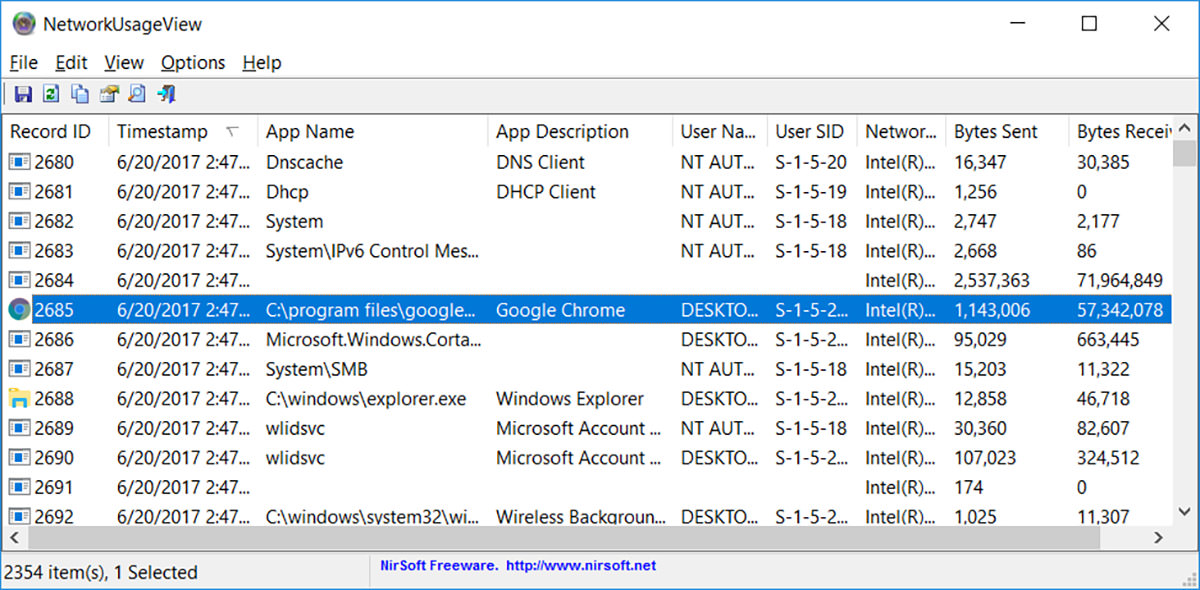
NetworkUsageView is a network usage viewer, not a comprehensive network monitor. It’s designed to work with Windows 8 and later versions, as earlier Windows versions do not collect bandwidth usage data. Despite this, it provides essential bandwidth usage information, though it lacks a floating window feature.
Compared to other tools, NetworkUsageView is faster and uses fewer resources because it primarily serves as a usage log viewer. Its viewer window provides detailed information about bandwidth usage, including data on specific apps and services. This feature allows you to monitor all network usage activities and identify any potentially harmful tools.
One unique feature of NetworkUsageView is its ability to display the user and network adapter associated with each record. This can be particularly useful in a multi-user environment, as it allows you to monitor users who may be exceeding their bandwidth quota. It can even track the bandwidth usage of a remote computer. Additionally, NetworkUsageView offers the option to export bandwidth usage data into a CSV file.

